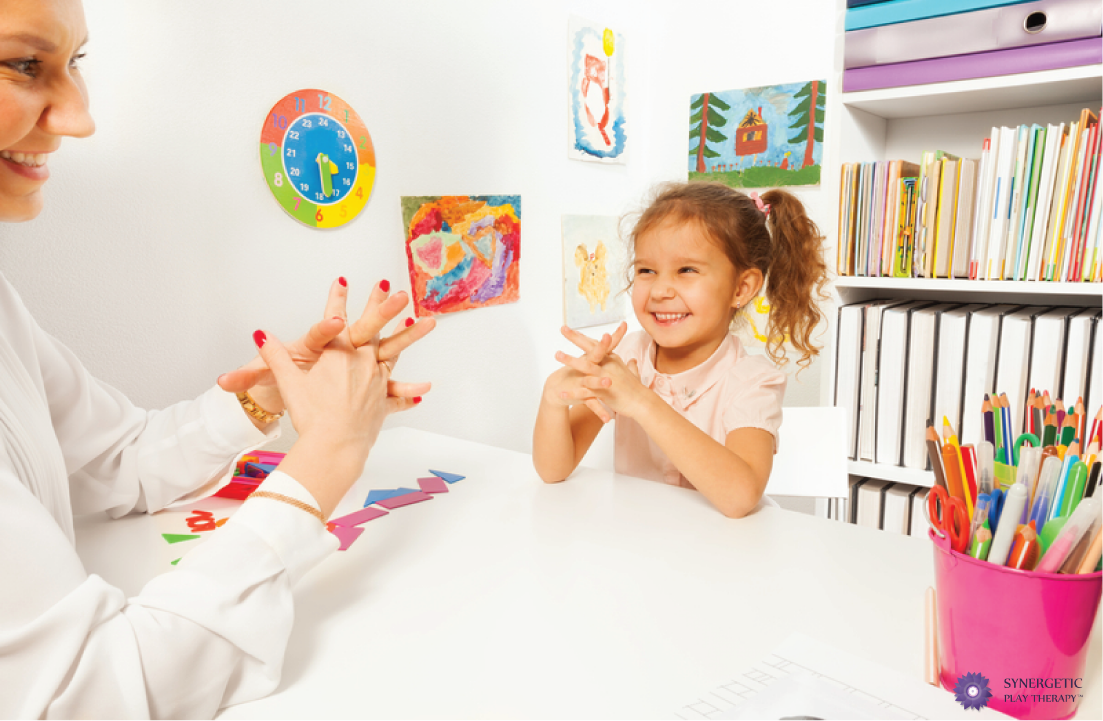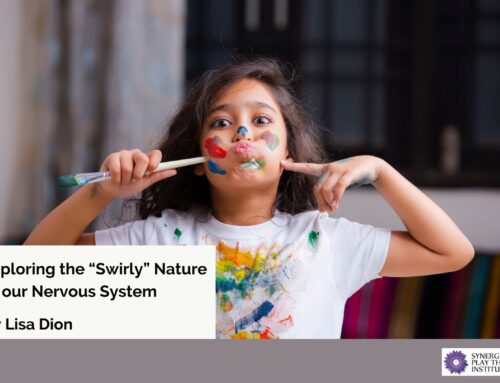Have We Forgotten the Most Important Toy in the Playroom?
By Lisa Dion, LPC, RPT-S
Play therapists are dedicated individuals. We work tirelessly to support the children and families with whom we work. We also study, a lot. We choose to spend weekends away from our loved ones and our personal lives learning how to use play room essentials like the sand tray, art, puppets and games. We travel long distances to take classes to learn things like how to work with parents when they are in the playroom and how to support children who have experienced trauma in their lives. We attend conferences, watch webinars, listen to podcasts and read book after book to learn new techniques to be able to apply in our sessions.
But, despite all this intense learning, I think we have forgotten the most important toy in the playroom—the therapist. Have we lost sight of the fact that we are actually the only toy that is needed in order for healing to happen? Have we forgotten that it is the therapist that has to facilitate the techniques used in the playroom? It’s really the therapist, not the technique, that makes the technique successful or not.
But how many classes do we take to learn about this toy? How much of our learning is dedicated to understanding ourselves specific to what’s happening in the playroom? Not much. We spend significantly more time learning about the other toys.
But, as neuroscience and interpersonal neurobiology continue to reveal what’s happening between two people when they interact, it has become increasingly important that we focus more attention on learning about the how and why the therapist is the most important and influential toy in the playroom. The more we understand neuroscience, brain function, nervous system states and what is really going on between the child and therapist, the more profound the integration that can occur for a child. The potential for healing in play therapy is so much greater and profound than we ever imagined!
Yes, we need to continue to hold space for the child as they work through challenges and offer them techniques to resolve what’s bothering them. We must use art, sand, puppets and army men. However, neuroscience shows us that what ultimately matters is how the therapist shows up and engages with the information that surfaces in the sessions.
Research has revealed that one of the key things therapists can do is focus on moving towards the challenging thoughts, emotions and sensations that are arising in the play. This deep level of engagement allows the therapist to connect to the themselves and ultimately the child in a way that helps integrate the challenging thoughts, emotions and sensations the child is experiencing inside. Subsequently, this level of engagement creates deep attunement; the kind of attunement that helps a child feel “felt” at a core level; the kind of attunement that reaches the child’s brain stem, so that they can begin to rewire from the bottom up.
In order for this level of attunement to occur, therapists must know how to attune to themselves. They must know how to understand their own internal states of nervous system activation. They must know how to read the feedback (sensations, emotions and thoughts) that arise in their bodies during the play therapy sessions when they are playing with the child or watching the child play. They must also know what to do with this information, instead of push it away or ignore it.
Without learning about ourselves as the most important toy, we miss part of the magic in the playroom and we miss understanding how play therapy actually works. When we don’t understand and know how to work with our own internal states, we cut off access to a deeper level of intuitive knowledge available to us during the play and we miss the ability to fully connect with the child. We also increase the probability of burn out and compassion fatigue, because we aren’t taking care of the most important toy.
The therapist is an untapped resource of knowledge. Remember, you have everything you need in any given moment to facilitate the process with your child client. You just have to know how to understand the information being presented to you—information from the child and information that arises in you.
So next time you consider taking a play therapy course or reading a book on a play therapy technique, consider choosing one on the most important toy in the playroom—you.
Interested in credits and courses delivered to your living room? Take a look at all our classes, available on our learning site.





